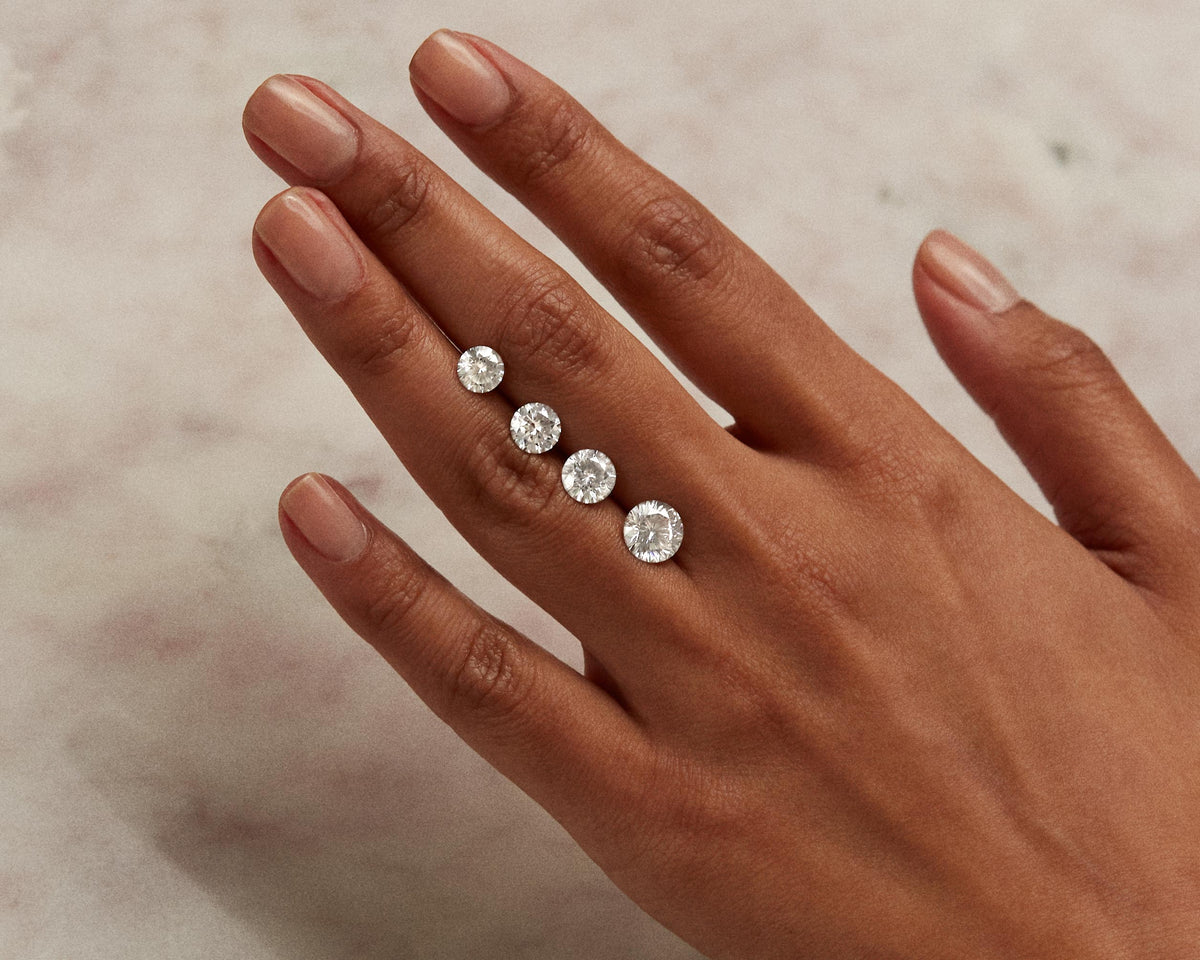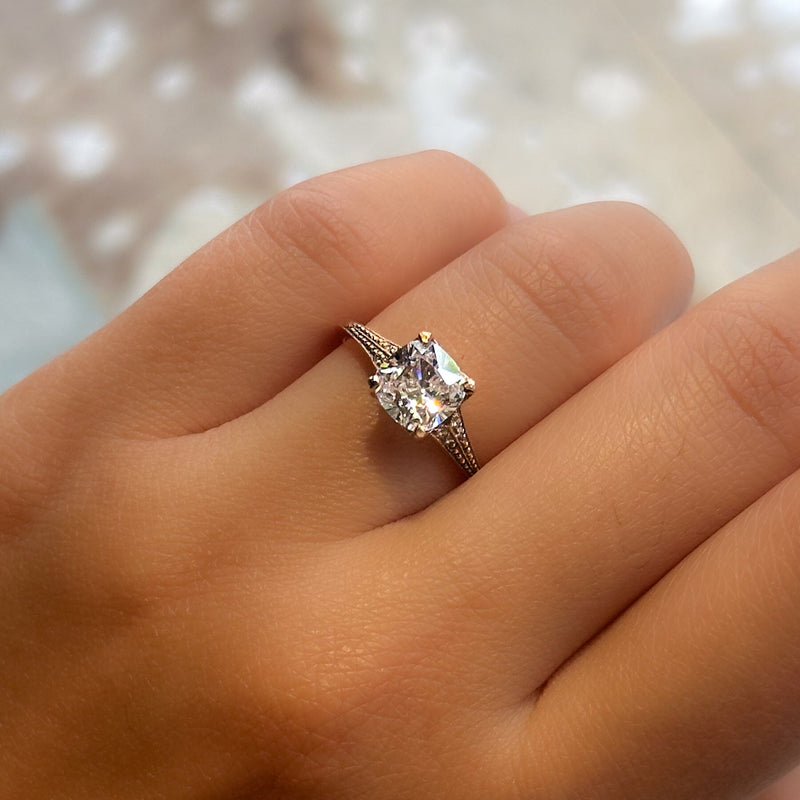

Lab-grown diamonds have been making waves in the jewelry industry, offering a sustainable and cost-effective alternative to traditional mined diamonds. In this article, we’ll delve into the world of loose lab-grown diamonds, exploring their benefits, popular uses, purchasing considerations, and much more.
Introduction to Lab-Grown Diamonds
What are lab-grown diamonds?
Lab-grown diamonds, also known as synthetic or cultured diamonds, are created in controlled laboratory environments rather than being mined from the earth. They possess the same chemical and physical properties as natural diamonds, with identical crystal structures and brilliance.
How are they different from natural diamonds?
While loose lab grown diamonds share the same properties as natural diamonds, they are distinguishable by their origin. Natural diamonds form deep within the earth’s mantle over millions of years through natural geological processes, whereas lab-grown diamonds are produced through advanced technological processes in laboratories within a matter of weeks.
Benefits of Loose Lab-Grown Diamonds
Cost-effectiveness
One of the most significant advantages of loose lab-grown diamonds is their affordability compared to natural diamonds. Since they are created in a controlled environment, the production costs are lower, resulting in more accessible pricing for consumers without compromising quality.
Ethical and environmental advantages
Unlike mined diamonds, which often involve environmental disruption and ethical concerns surrounding labor practices, lab-grown diamonds offer a sustainable and ethical alternative. They require minimal environmental impact and eliminate the risk of supporting conflict or “blood” diamond trade.
Quality and diversity
Loose lab-grown diamonds are available in a wide range of sizes, shapes, and colors, offering consumers greater flexibility and choice in their jewelry designs. Additionally, they undergo rigorous quality control measures, ensuring consistent brilliance and purity across each diamond.
Factors to Consider When Buying Loose Lab-Grown Diamonds
Clarity and color grading
When purchasing loose lab-grown diamonds, it’s essential to consider factors such as clarity and color grading to ensure you’re getting the best value for your money. Look for diamonds with high clarity grades and vibrant colors to maximize their beauty and brilliance.
Cut quality
The cut of a diamond plays a crucial role in its overall appearance and sparkle. Opt for loose lab-grown diamonds with excellent cut grades, as they will exhibit superior light performance and optical precision, enhancing their visual appeal.
Carat weight
Carat weight refers to the size of a diamond and is a significant factor in determining its value. Consider your budget and personal preferences when selecting the carat weight of your loose lab-grown diamond, keeping in mind that larger diamonds may come at a higher price.
Popular Uses of Loose Lab-Grown Diamonds
Engagement rings
Loose lab-grown diamonds have become increasingly popular choices for engagement rings, symbolizing love and commitment while offering couples an ethical and affordable option. Their versatility allows for customization, enabling individuals to create unique and meaningful designs.
Fine jewelry
In addition to engagement rings, loose lab-grown diamonds are also used in various other types of fine jewelry, including earrings, necklaces, bracelets, and pendants. Their exceptional quality and brilliance make them ideal for showcasing in elegant and sophisticated designs.
Customized designs
One of the advantages of loose lab-grown diamonds is their ability to be tailored to specific preferences and designs. Whether you’re seeking a classic solitaire or a contemporary halo setting, lab-grown diamonds offer endless possibilities for creating custom-made pieces that reflect your style and personality.
Comparing Loose Lab-Grown Diamonds with Natural Diamonds
Price comparison
One of the most significant differences between loose lab-grown diamonds and natural diamonds is their price. Lab-grown diamonds typically cost 20-40% less than their natural counterparts, making them a more budget-friendly option for consumers without sacrificing quality or beauty.
Quality and brilliance
While natural diamonds have long been revered for their rarity and mystique, lab-grown diamonds are renowned for their exceptional quality and brilliance. Thanks to advanced technology and quality control processes, lab-grown diamonds exhibit identical optical properties and fire as natural diamonds.
Environmental impact
Unlike traditional diamond mining, which can have detrimental effects on the environment and local communities, lab-grown diamond production is far more sustainable and eco-friendly. By opting for loose lab-grown diamonds, consumers can contribute to reducing their carbon footprint and supporting ethical practices within the jewelry industry.
How to Care for Loose Lab-Grown Diamonds
Cleaning and maintenance tips
To keep your lab grown diamond stud earrings looking their best, it’s essential to clean them regularly using a mild soap and warm water solution. Gently scrub the diamonds with a soft-bristled brush, then rinse thoroughly and pat dry with a clean cloth. Avoid using harsh chemicals or abrasive materials, as they can damage the diamond’s surface.
Storage recommendations
When not wearing your loose lab-grown diamonds, store them separately from other jewelry pieces to prevent scratching and damage. Consider investing in a soft fabric or velvet-lined jewelry box to keep them safe and secure when not in use.
Where to Buy Loose Lab-Grown Diamonds
Online retailers
There are numerous online retailers specializing in loose lab-grown diamonds, offering a wide selection of sizes, shapes, and designs to choose from. Look for reputable vendors with positive customer reviews and certifications from recognized industry authorities.
Physical stores
Many brick-and-mortar jewelry stores now carry loose lab-grown diamonds alongside their natural diamond offerings. Visit local retailers to view their selection in person and speak with knowledgeable staff who can assist you in finding the perfect diamond for your needs.
Certification and authenticity
When purchasing loose lab created diamonds, always ensure they come with proper certification from reputable gemological laboratories, such as the Gemological Institute of America (GIA) or the International Gemological Institute (IGI). These certifications verify the diamond’s authenticity, quality, and specifications, providing peace of mind for buyers.
Future Trends in Lab-Grown Diamond Industry
Technological advancements
As technology continues to evolve, so too will the production methods and capabilities of lab-grown diamonds. Innovations such as advanced plasma-enhanced chemical vapor deposition






